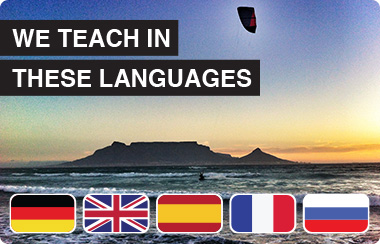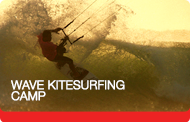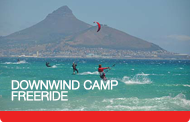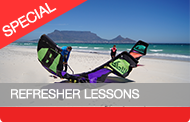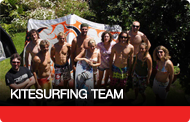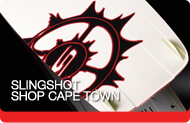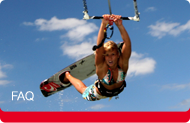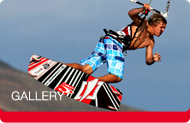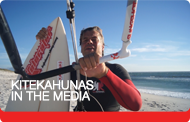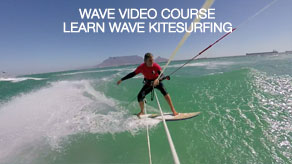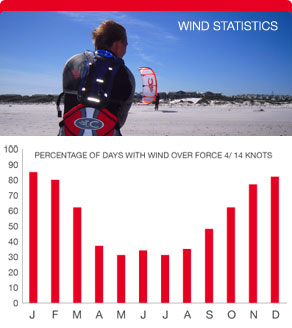Frequently Asked Questions
10 Top Questions about wave kitesurfing
Originally Published in the April 2009 Issue of The Kiteboarder Magazine. TOP 10 QUESTIONS About Kiting in the Surf. By Paul Lang. Augmented by KITEKAHUNAS.
For kitesurfer who have already been surfing for years before they picked up a kite, the progression into the surf is a natural and relatively easy one. However, not every new kiteboarder is an experienced waterman. For some riders, kiteboarding is their first ocean sport. The surf can be an intimidating place for those who do not have any experience there, but the fun that can be had is well worth the effort. We pulled together the top 10 questions asked by kiters who do not have any ocean experience. If you are thinking about heading to the surf (i.e. the waves) for your first time, remember to start small and work your way up from there.
1. When am I ready for the surf, for kitesurfing in the waves?
In general, if you cannot handle yourself in flat water, things are not going to go any better for you in the waves. You should be able to ride comfortably in both directions and be able to quickly change directions before you tackle the surf. Best even, if you can do small jumps or pops. Pick a day with small waves for your first session in the surf and take baby steps from there.
2. What can I do to get more experience in the surf / in the waves?
If you are new to being in the ocean, kiteboarding in the surf can be very intimidating. If you have never been in the waves before, give paddle surfing or even just swimming in the surf a try. The only way to get experience in the surf is to spend time in the water, and being comfortable in the waves is very important if you want to kite there.
3. Do I have to ride a directional in the surf?
Despite the fact that almost everyone shows up at the beach with directional boards, you can still ride a twin tip in the surf / in the waves. If fact, if you are beginning, sticking with your twin tip removes the factor of having to learn how to jibe while getting used to kiting in the waves. With a directional, you can ride a smaller kite and really get into the pocket and ride the wave, but twin tips can still be a blast in the waves.
Annotation by KITEKAHUNAS: You can do your Wave Kitesurfing Camp with your twin tip, not a problem, or we teach you how to get used to a directional board. This will happen in flat water at the beginning. We usually do wave kiteboarding on downwinders. The advantage of this is that you do NOT have to learn to jibe, in the beginning, which makes your learning curve so much faster.
4. What size board should I ride?
This depends a lot on how you ride. For your first sessions in the surf, you should just ride the same twin tip that you ride in flat water. If you want to ride a surfboard, the general consensus is that you should ride a board that is similar in size to a board you would paddle surf on if you want to really surf the wave. For the average size rider with little or no surf experience, a board in the 6’ range is a good starting point.
5. Should I wear a leash?
No, you should not wear a leash in the surf / in waves as they can be very dangerous. Many people have been seriously injured when their board leash caused the board to slingshot back at them. If you cannot manage without a board leash, your skills are not yet ready for the surf. That being said, some riders do wear leashes under certain special circumstances, such as when the shore is rocky, which would cause a lost board to quickly become a broken board. If you ever use a board leash, then you absolutely need to wear a helmet, but we strongly recommend that riders do not use board leashes. Read The Exception: Kitesurfing with a Leash for reasons to wear a leash in the surf.
Annotation by KITEKAHUNAS: A directional board is much easier to recover than a twin tip, because the wind drives it downwind much faster. In Cape Town, we mostly have sand beach on the way of our downwind passages, so no board leashes are needed. This makes learning wave kiteboarding much safer. So best conditions to learn wave kiteboarding in Cape Town!
6. Should I ride with or without straps?
Most riders usually ride with straps, but it’s best to stay flexible and change it up based on the conditions. Kitsurfing strapless can be a lot of fun, or it can be incredibly frustrating. When the surf is relatively clean and smaller than chest high, go ahead and take the straps off. When the surf is choppy, you’ll usually have more fun with straps.
7. How do you get out when riding strapless?
The first trick to getting out past the surf without straps is to pay close attention to the waves as you are setting up. At most locations, you will be able to see channels between the waves where the waves break less often and much smaller. Kite out through these channels and you can quickly find yourself on the outside without much effort. If you do need to go over a wave, slow down and keep your kite high. As you hit the whitewater, suck your knees up and try to be light on your feet. Keep more pressure on your back foot and guide your board up and over the whitewater while most of your weight is supported by your kite.
8. What do you do if the kite crashes in the surf?
If your kite goes down in the surf, get it back up as quickly as possible. A kite that gets sucked into a wave has a good chance of coming out broken. If you cannot get your kite up before the next wave hits it, swim towards the kite as it is hit to take the pressure off the kite.
9. What conditions are good for learning to ride waves?
When you are just starting out kiting in the waves, you want small waves to learn on. Knee-high waves with 15 knots of side to side-on wind make just about ideal conditions for getting down the basics in the surf.
Annotation by KITEKAHUNAS: In our Wave Kitesurfing Camp we usually do wave kiteboarding on downwinders. The advantage of this is that you do NOT have to learn to jibe, in the beginning, which makes your learning curve so much faster. Also the wind angle in relation to the waves is perfect.
10. What do I need to know about surf etiquette?
In the surf, you have to give considerations to surf etiquette, which basically means that you should not get in the way of anyone who is surfing, whether that person is a kitesurfer, windsurfer, or regular paddle surfer. Always yield to the rider on the wave regardless of who is on port or starboard. Avoid riding near surfers and never spray them. Stay outside of the surf until you are ready to ride a wave. Don’t try to catch every wave out there. The ocean is not going to run out anytime soon.
Intested to learn wave kitesurfing? Here is the Trailer of KITEKAHUNAS video course series - Learn Wave Kitesurfing:
Trailer to the Video Course KITEKAHUNAS - Learn Wave Kitesurfing
The offer of KITEKAHUNAS - advanced kitesurfing school in Cape Town, South Africa >>
- What is Special about Cape Town?
- Top 10 Questions about Wave Kiteboarding
- Ideal Wave Board for Wave Kitesurfing?
- What about the Wind in Cape Town?
- Cold water in Cape Town?
- Waves or Flat Water in Cape Town/ Langebaan?
- Your Security and Crime in Cape Town?
- Are Sharks a problem in Cape Town?
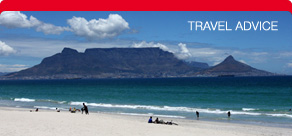
To book your air travel package to Cape Town, you can either arrange it on your own (e.g. with South African Airways, Lufthansa, Swiss, British Airways, KLM, Air France, Emirates) or our travel agents can help you to find the best rates for your flight >>
If you wish to hire your own car for trips in your spare time, please go here >>
 English
English Deutsch
Deutsch












